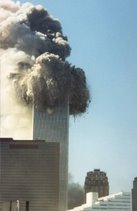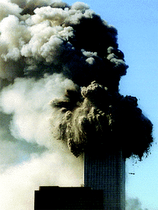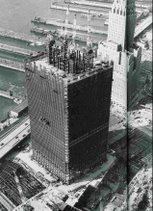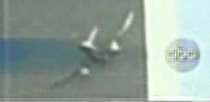Boeing is set to perform a crash test today on its 787 Dreamliner — by dropping a section of the fuselage from the height of a second-story window.
Boeing has not done crash tests to get previous jets certified to fly. It's necessary this time because the 787 is the first airliner built largely out of carbon-fiber-reinforced plastic, which is more brittle and less shock-absorbent than metal.
The procedure, which federal aviation regulators will monitor, may not seem like much of a trial for a jet that will travel 550 mph at 35,000 feet.
But the test isn't designed to simulate a full-tilt fall to Earth. Rather, it replicates the vertical impact of an emergency landing in which the plane hits the ground harder than normal — often referred to as a crash landing.
. . .
Observed by FAA technical specialists, Boeing engineers will drop a 10-foot-long fuselage piece from a height of about 15 feet onto a 1-inch-thick steel plate. It will hit the ground at around 30 feet per second.
. . .
In the second test, performed a few months ago, a steel plate was suspended above and then rammed into a fuselage section positioned upside down on the ground.
"Essentially, we brought the runway to the airplane," said [Jeff Hawk, Boeing's 787 executive responsible for certification]. "When you talk crush characteristics, it doesn't matter if the ground is coming at you or you are coming at the ground."
(emphasis added)
. . .
Ed Fasanella, a senior NASA engineer and crash expert, worked on the two earlier 737 drop tests and is involved with extensive crash testing at NASA's Langley Research Center in Virginia.
Fasanella said that in a crash landing, the forward momentum is usually not a problem because the plane skids along for some distance. It's the instant deceleration in the vertical dimension, with a hard stop at the ground, that can cause injury or death.
He said that if a plane hits the ground at a vertical sink speed of 42 feet per second or faster, there likely won't be survivors.
That's why a vertical drop test is key to the analysis.
"Since it is composite, it's harder to analyze," Fasanella said, "You almost have to do a physical test."
While metal bends and crumples rather than breaking under high loads, he said, carbon-fiber plastic composites are typically "brittle."
In other news, "Bolt pierced fuel tank of 737 that exploded, officials say"
http://seattletimes.nwsource.com/html/boeingaerospace/2003849697_webplanefire23.html
http://seattletimes.nwsource.com/ABPub/zoom/html/2003845907.html





http://www.iht.com/articles/ap/2007/08/22/asia/AS-GEN-Japan-Plane-Fire.php
http://www.pr-inside.com/massive-fuel-leak-could-have-triggered-r203786.htm
http://www.japantoday.com/jp/news/415690
http://www.gulf-times.com/site/topics/article.asp?cu_no=2&item_no=167933&version=1&template_id=45&parent_id=25









No comments:
Post a Comment